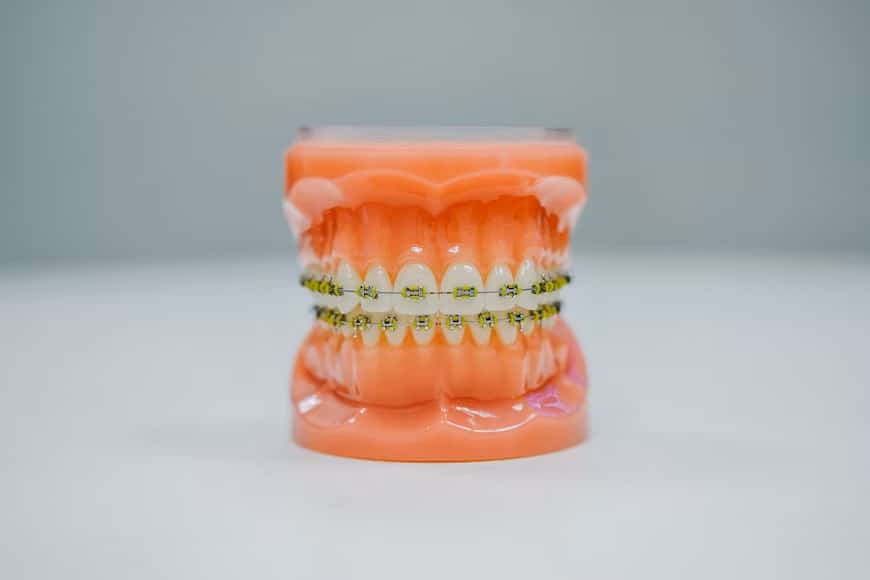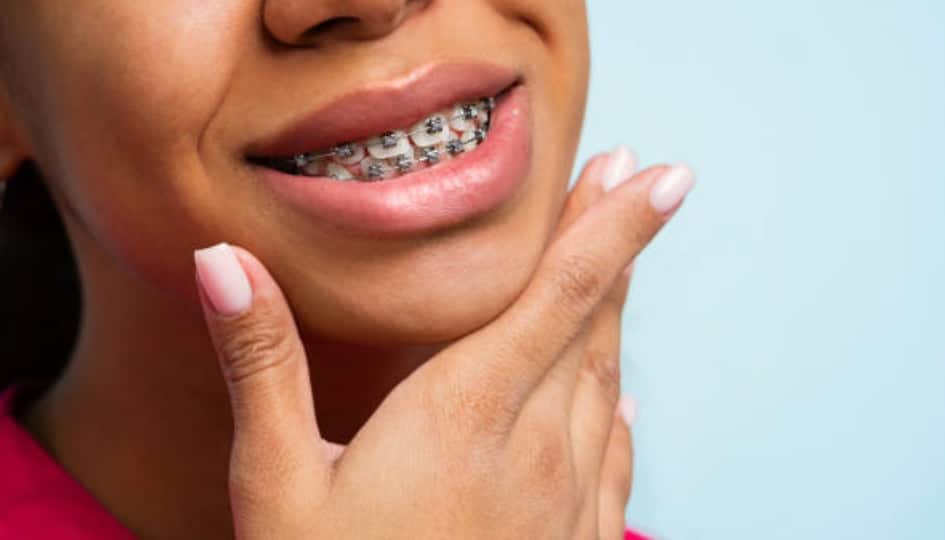Orthodontic treatment has come a long way over the years. One of the earliest forms of orthodontic treatment is traditional metal braces. Metal braces are the most common and recognizable type of braces used to correct teeth alignment problems. They consist of metal brackets attached to the teeth and connected with wires and elastics. While there are newer and more discreet orthodontic treatments available, traditional metal braces are still widely used for their effectiveness and affordability.
In this blog post, we will explore the basics of traditional metal braces, how they work, their advantages and disadvantages, and what to expect during treatment.
What are braces
Braces are orthodontic devices designed to align and correct dental misalignments for a healthier, more attractive smile. We offer various braces at Roots and Crown Dental Clinic, including traditional metal braces, clear ceramic braces, and innovative invisible aligners. Our skilled orthodontists create personalized treatment plans to address crooked teeth, gaps, and bite issues. With advanced technology and a commitment to patient comfort, we provide effective orthodontic solutions that result in beautifully aligned teeth and improved oral health. Trust us to guide you towards a confident and dazzling smile through our expert braces treatments.
What are dental braces/orthodontic treatments?
Dental braces, or orthodontic treatment, are transformative solutions that correct misaligned teeth and bite issues. At Roots and Crown Dental Clinic, we offer a range of orthodontic options, including traditional metal braces, clear braces, and discreet aligners. Our skilled orthodontists design personalized treatment plans to address your unique needs, gradually shifting teeth into optimal alignment. With cutting-edge techniques and a focus on patient comfort, we ensure effective results that enhance your smile’s aesthetics and improve oral health. Trust us to guide you towards a straighter, healthier smile with our expert orthodontic care.
WHAT ARE BRACES USED FOR?
Braces are versatile orthodontic tools that correct dental issues, such as crooked teeth, overcrowding, misalignments, and improper bites. At Roots and Crown Dental Clinic, our skilled orthodontists utilize braces to guide teeth into their proper positions over time gently. Beyond enhancing your smile’s aesthetics, this transformative process bolsters oral health by preempting potential issues such as gum disease and tooth decay. With different braces available, including traditional, ceramic, and invisible aligners, we tailor solutions to your needs, ensuring a confident smile and optimal dental well-being.
Types of Dental braces
At Roots and Crown Dental Clinic, we offer a range of dental braces to suit your orthodontic needs. Traditional metal braces provide effective realignment, while clear ceramic braces offer a discreet option. For those seeking nearly invisible treatment, our advanced invisible aligners gradually shift teeth with minimal visibility. Lingual braces on the inside of teeth provide an additional level of aesthetic appeal. Our skilled orthodontists assess your condition and preferences to recommend the most suitable type. With a commitment to enhancing smiles and oral health, we provide personalized braces solutions for a confident and aligned smile.
How do traditional metal braces work?

Advantages of traditional metal braces
1. Effective for complex cases
Traditional metal braces are highly effective for treating complex teeth alignment issues such as severe crowding, overbite, underbite, and crossbite. They can correct even the most challenging cases that other types of orthodontic treatments may not be able to.
2. Affordable
Traditional metal braces are generally more affordable than other orthodontic treatments, such as clear aligners or lingual braces. They are often covered by dental insurance, making them a cost-effective option for many people.
3. Durable
Metal braces are very durable and can withstand a lot of pressure without breaking. They are made of high-quality stainless steel and can last throughout the entire treatment period without needing to be replaced.
Disadvantages of traditional metal braces
1. Aesthetics
Traditional metal braces are the most noticeable type of braces, which can be a concern for some patients, especially adults. The metal brackets and wires can be seen when talking or smiling, which can affect self-esteem.
2. Maintenance
Traditional metal braces require regular maintenance, including brushing and flossing after every meal, avoiding certain foods that can damage the braces, and attending regular appointments with the orthodontist for adjustments.
3. Discomfort
As mentioned earlier, the pressure applied to the teeth can cause discomfort, especially during the first few days after the braces are applied or adjusted. In addition, the brackets and wires can irritate the cheeks and lips, causing soreness or ulcers.
What to expect during treatment
If you are considering traditional metal braces as a treatment option for your teeth, it is important to understand what to expect during the process. Here is a general overview of what to expect during traditional metal braces treatment:
-
Initial Consultation
The first step in the process is to schedule an initial consultation with an orthodontist. During this consultation, the orthodontist will examine your teeth, take x-rays and impressions, and discuss your treatment options with you. They will also explain the benefits and potential drawbacks of traditional metal braces and answer any questions you may have.
-
Placement of Braces
Once you have decided to proceed with traditional metal braces, the orthodontist will schedule an appointment to place the braces. This process typically takes between one and two hours. First, your teeth will be thoroughly cleaned and dried. Then, the orthodontist will place small brackets on each tooth with a special adhesive. Once the brackets are in place, a wire will be threaded through them and secured with small elastic bands.
-
Adjustment Appointments
After the braces are in place, you will need to visit the orthodontist every four to six weeks for adjustment appointments. During these appointments, the orthodontist will tighten the wire and adjust the elastic bands as necessary to gradually move your teeth into the desired position. You may experience some discomfort after these appointments, but it should only last for a few days.
-
Oral Hygiene
Maintaining good oral hygiene is critical during traditional metal braces treatment. You will need to brush your teeth after every meal and floss at least once a day. It is also important to avoid sugary and sticky foods that can get trapped in the braces and cause tooth decay.
-
Duration of Treatment
The length of time you will need to wear traditional metal braces depends on the severity of your orthodontic issues. On average, treatment with traditional metal braces lasts between 18 and 36 months. However, some patients may need to wear braces for a shorter or longer period of time.
-
Removal of Braces
Once your teeth have moved into the desired position, the orthodontist will remove the braces. This process is painless and typically takes about an hour. After the braces are removed, the orthodontist will take new impressions of your teeth and create a retainer to help maintain your new smile.
-
Retention
After your braces are removed, you will need to wear your retainer as directed by your orthodontist. This will typically involve wearing the retainer full-time for a few months, and then gradually decreasing the amount of time you wear it until you are only wearing it at night. This is an important step to prevent your teeth from shifting back to their original position.
In conclusion, traditional metal braces are an effective orthodontic treatment that can straighten teeth and create beautiful smiles. While the treatment process can be lengthy and require regular adjustments, the end result is well worth it. If you are considering traditional metal braces, be sure to schedule a consultation with an experienced orthodontist to discuss your options and develop a treatment plan that works for you.

